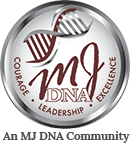Essential Tremor Awareness Month in Assisted Living Facilities
Assisted living facilities may organize different activities and events to educate residents, caregivers, and staff about essential tremors, including symptoms, diagnosis, treatment options, and how they can affect daily life.
One objective of National Essential Tremor Awareness Month is to increase understanding and empathy for individuals living with essential tremors, promote early detection and diagnosis, and provide support and resources to those affected by this condition as they dwell in assisted living facilities.
What is Essential Tremor Awareness Month?
It is important to note that shaky hands are not a sign of aging. On the other hand, a shaky head is not a definite sign of Parkinson’s disease. However, involuntary shaking of the head, hands, voice, trunk, or legs are possible signs of essential tremor.
March is National Essential Tremor Awareness Month, which aims to educate the public about the common condition and rally support for those affected by it. It is also an important month for those affected by essential tremors. This occasion provides organizations with the aim of educating people about this condition and raising funds to find a cure and better treatments.
What to Know about Essential Tremor
Essential tremor is a movement disorder that will cause the body to shake uncontrollably. It is hard to keep yourself from doing it as it usually affects your hands and arms, as well as your head, voice, and other body parts.
It is essential to know that it can severely disrupt some of life’s most basic tasks, including drinking, eating, and dressing yourself. Moreover, advanced stages will cause many people to struggle with feelings of embarrassment or anxiety about its symptoms.
Anyone can experience essential tremor, but it is more common in older people. Likewise, it can run in families and is sometimes referred to as familial tremor. It happens to people between the ages of 10 and 19 or between 50 and 59.
There is no cure for essential tremors, but treatment options are available to manage symptoms and improve quality of life.
- Medications – anticonvulsants, benzodiazepines, beta-blockers
- Deep brain stimulation
- Focused ultrasound thalamotomy
- Lifestyle modifications
Essential Tremor in Assisted Living Facilities
As people age, the prevalence of essential tremor increases, but hereditary tremor is becoming less common. On the other hand, late-manifesting tremors may be associated with dementia or earlier mortality.
Recent research shows that elderly tremors are common but have never received adequate attention. Moreover, this condition is associated with mild cerebellar functional deficit. However, no formal studies are being published, and almost all available epidemiological studies classify action tremors in the elderly as essential tremors.
Overall, people living in assisted living facilities may experience essential tremors, as studies show that the prevalence of this condition in the elderly increases with age. Thus, patients must work closely with healthcare professionals to develop a personalized treatment plan for their specific needs and preferences.
If you want excellent care in Nebraska, click here to learn more about Fallbrook Assisted Living!
Fallbrook Assisted Living is proud to offer its services to Fremont, NE, and surrounding areas and cities: Arlington, Cedar Bluffs, Ames Nickerson, Fontanelle, Arlington, Leshara, Colon, and Hooper




